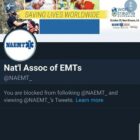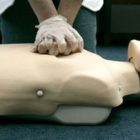
Oct 17, 2019
The world of social media is full of experts on almost every topic, including prehospital medical care. When I say experts, I guess I should really be saying “experts.” There are a lot of people out there who know how we should perform our jobs, and how things should be done. Let’s take a closer look at one such example that recently made its way on to my timeline. You’re a BLS provider. A 70 year old male who is experiencing chest pain calls 911. The patient and his wife tell you that he has a history of an MI which was treated in Philadelphia in the year prior. They are requesting to go to a community hospital without interventional cardiac catheterization capabilities that is about 20 minutes away. About 15 minutes past the community hospital is a larger hospital with an interventional cath lab. The paramedics are on the way, and you have an opportunity to meet them on the highway. The safest place to rendezvous with them is at a rest area just after you get on the highway. You pull over, and wait for the paramedics to arrive. The wait is described as causing as long as a “15 minute delay” to perform a 12-lead EKG. The EKG is done, it comes back as non-diagnostic for STEMI, and the transport to the community hospital is completed. At the surface, with the theatrics of a storyteller aside, as an “expert” on EMS, it seems appropriate to me. There was a decision to be made and a determination of what definitive care was for that patient. If he was positive for a STEMI, an interventional cath lab becomes definitive care, not a community hospital without those capabilities. A husband and wife residing in Sea Isle City, New Jersey disagree with my view. They felt the care was inappropriate and the delay was not warranted. They took their concerns to the town council. Barbara Crowley told the city council that “If this delay had been the last time, I would have lost my husband.” I can play the “what if” game too. If this delay had happened last time, the patient would have had...





